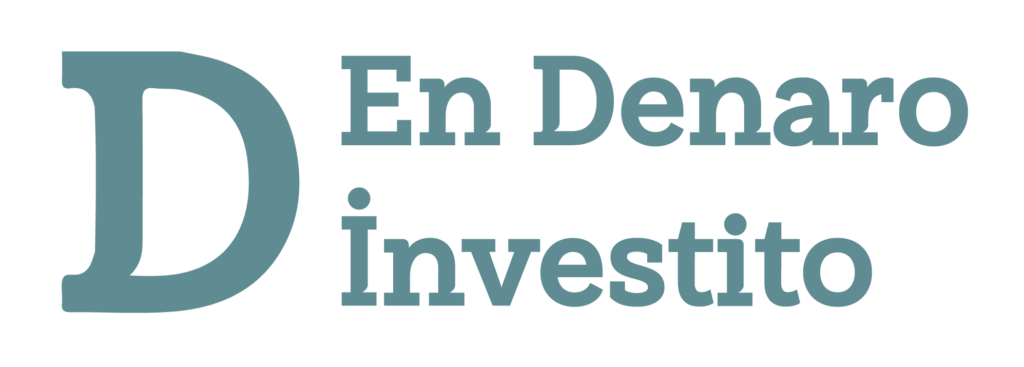Understanding the factors that determine loan interest rates is key when borrowing money. It matters whether you’re looking into a mortgage, a personal loan, or a business loan. Knowing what impacts the rates helps you make smarter financial choices and save money.
We’ll discuss the main elements that affect loan interest rates. Their role in finance is significant.
- Loan interest rates are influenced by various factors
- Understanding these factors can help you make informed financial decisions
- Factors include credit scores, loan types, economic conditions, and lender policies
- Regularly assessing these factors can help you secure more favorable loan terms
- Stay informed and stay in control of your financial future
Factors Affecting Loan Rates
It’s vital for borrowers to know what affects loan rates. When you’re getting a loan, think about the different things that determine the interest rate. Understanding these factors will help you know why rates change and decide wisely.
A few main things impact loan rates, such as:
- Credit Score: Your credit score matters to lenders. If your score is high, you might get lower interest rates. That’s because lenders see you as less of a risk.
- Loan Type: The kind of loan you choose affects your rate. Mortgages, auto loans, and personal loans all have different rates. Each comes with its own risk and market conditions.
- Economic Conditions: Things like inflation, unemployment, and the overall market influence rates. In a growing economy, rates may rise because more people want loans.
- Market Forces: How much lenders can lend and how many are lending affects rates. If there’s a lot of competition and money to lend, you might get a good deal.
- Loan Amount and Term: Bigger loans and longer terms can lead to higher rates. This is due to the greater risk and possible changes in the market.
Remember, these factors don’t work alone; they interact. By looking at these aspects and doing your research, you can understand rate changes better. That way, you can make choices that fit your financial plans.
Interest Rate Components
When you apply for a loan, it’s key to know the parts that affect interest rates. Looking closely at these parts helps you understand how rates are set. Here are the main components that determine interest rates:
Inflation
Inflation deeply affects interest rates. If inflation goes up, your money buys less. Lenders up rates to keep their earnings strong as money value drops. Knowing about inflation helps you guess rate changes and make smart choices.
Credit Risk
Credit risk is about the chance you won’t pay back the loan. Lenders check how likely you are to repay by looking at your credit score, history, and job consistency. If they see you as risky, they’ll charge more. Keeping a good credit score helps you get better loan terms.
Market Conditions
Market trends are big in setting rates. Loan supply and demand, economic health, and how much competition lenders have all play a part. When demand is high or the economy’s shaky, rates can go up. Watching the market helps you understand the best time to borrow.
Getting why these factors matter is key when you’re looking for good loan rates. Look into inflation, credit risk, and market trends, and you’ll be better off. Next, let’s see how your credit score and history affect your rates.
Credit Score and Credit History
Your credit score and history are very important. They help decide your loan interest rates. Lenders look at these to see how risky it is to lend you money. People with good credit scores and histories get lower interest rates.
The things about your credit that affect loan rates include:
- Long-term creditworthiness: Your credit score shows if you are a trustworthy borrower. High scores mean you have borrowed and paid back responsibly. This makes lenders offer you better rates.
- Risk assessment: Lenders check your credit history to see how much of a risk you are. A good history shows you manage your finances well. This lowers the risk for lenders.
To get better loan terms, work on your credit score and history.
- Pay bills on time: This shows you are responsible and helps your credit score.
- Manage debt: Keep your credit card balances low and pay off debts. This makes you look less risky.
- Monitor credit reports: Check your reports for mistakes or fraud. Fixing these can help your score.
- Seek professional guidance: Credit counselors or financial advisors can give you tips to improve your credit.
“Keeping a good credit score and history is key to getting good loan rates. Show you’re financially responsible, and manage your debts well. This way, you can get better loan terms.” – [Your Name or Brand]
See how credit scores affect interest rates below:
| Credit Score | Interest Rate |
|---|---|
| Excellent (750+) | 3.50% |
| Good (700-749) | 4.25% |
| Fair (650-699) | 5.50% |
| Poor (600-649) | 7.00% |
| Bad (below 600) | 10.00% |
The table shows different rates for different credit scores. People with excellent scores get the lowest rates. If your score is lower, you pay more. This shows why a good credit score matters for affordable loans.
Economic Conditions
Economic conditions are key in setting loan interest rates. Factors like inflation, jobless rates, and the economy’s health impact the cost of loans. Let’s see how these elements affect lending rates and what borrowers should know.
Inflation
Inflation means prices for goods and services rise over time. High inflation reduces money’s value. Lenders raise rates to offset money’s value decrease caused by inflation. Hence, borrowers may see higher loan rates as lenders aim to keep their returns.
Unemployment Rates
Unemployment rates show the workforce percentage still job hunting. High unemployment suggests a weaker economy and spending. Lenders might boost loan rates to lessen risk in these times. But, with low unemployment, loan rates may drop to draw in borrowers.
Overall State of the Economy
The economy’s health, considering GDP growth and consumer confidence, also shapes loan rates. In a strong economy, loan demand rises, pushing up rates. But in downturns, lenders may cut rates to encourage loans and activity.
“Economic factors mold the financial scene and affect loan interest rates. Knowing how these factors and rates relate helps borrowers make wise choices.”
By keeping track of economic indicators and seeing how they relate to loan rates, borrowers can strategize better. This allows them to find good borrowing conditions, secure favorable loan terms, and reach their financial objectives.
| Economic Indicator | Impact on Loan Rates |
|---|---|
| Inflation | Higher inflation leads to higher loan interest rates to maintain real returns. |
| Unemployment Rates | High unemployment rates may result in higher loan rates due to increased lending risk. |
| Overall State of the Economy | A booming economy may lead to higher loan rates, while economic downturns may result in lower rates to stimulate borrowing. |
Loan Type and Term
The type and term of a loan matter a lot when figuring out interest rates. Every loan type affects how much you’ll pay in different ways. Knowing this helps borrowers choose what’s best for them.
Secured vs. Unsecured Loans
It’s important to know the difference between secured and unsecured loans. A secured loan needs collateral, like a house or car. If you can’t pay, the lender can take your collateral. Unsecured loans don’t need collateral, but they have higher interest rates because they’re riskier for the lender. Think carefully about your needs and risks before choosing.
Short-term vs. Long-term Loans
How long you have to pay back the loan also affects interest rates. Short-term loans mean you pay less interest but have bigger monthly payments. This is because lenders want their money back fast. Long-term loans have smaller monthly payments but more interest over time. Choose based on what you can handle and your financial goals.
Making the right choice between loan types and terms is key. Pick a loan that fits your financial situation and aims. Consider what you can offer as collateral, your comfort with risk, and how you plan to pay back. This way, you’ll get a loan that works best for you.
| Loan Type | Interest Rate | Risk Profile |
|---|---|---|
| Secured Loan | Lower | Lower (collateral offsets risk) |
| Unsecured Loan | Higher | Higher (no collateral increases risk) |
| Short-term Loan | Lower | Higher (quicker repayment) |
| Long-term Loan | Higher | Lower (prolonged repayment increases risk) |
This table shows the main factors that affect loan rates. It looks at the interest rate, risk profile, and more for various loans. By understanding this, borrowers can choose the best loan. This helps in lowering interest rates and managing money better.
Market Forces
Market forces are key to understanding loan interest rates. They are shaped by things like the demand for loans, interest rate changes, and how much competition there is among lenders. Knowing about these forces can help borrowers make smart choices and find good deals on loans.
The balance between supply and demand is crucial. When many people want loans but there’s not much money available, interest rates go up. But if there’s a lot of money and not many people looking for loans, rates can go down. So, how much demand there is for loans really affects the rates lenders offer.
Interest rate fluctuations also play a big part. The Central Bank sets a key rate that influences what lenders charge. If this rate goes up, borrowing gets more expensive, and lenders may raise their rates too. This way, they keep making a profit.
Competition among lenders is another big factor. To win over customers, lenders might offer lower rates or better loan terms. This can lead to cheaper loans for borrowers. But if there’s less competition, rates might not be as low.
It’s smart for borrowers to keep up with market conditions. Watching things like interest rates and how active lenders are can offer clues about the best time to get a loan. It’s also helpful to compare offers from different lenders to get the best deal.
Benefits
There are several advantages for borrowers who understand market forces:
- Cost Savings: By looking at the market, borrowers can find times when loans are cheaper and save money.
- Improved Negotiations: Knowing about current market trends helps borrowers negotiate better terms and rates on loans.
- Strategic Timing: Keeping an eye on market forces lets borrowers apply for loans when conditions are best.
- Financial Planning: This knowledge aids in planning finances more effectively, taking potential interest rate changes into account.
Market Forces Infographic
| Market Force | Impact |
|---|---|
| Supply and Demand Dynamics | Affects interest rates depending on the balance between loan demand and available funds. |
| Interest Rate Fluctuations | Changes in benchmark rates affect lenders’ borrowing costs, altering loan interest rates. |
| Lender Competition | Strong competition among lenders results in lower rates and better terms for borrowers. |
Knowing how market forces impact loan rates is crucial for borrowers. It helps them understand the lending market better. By considering these factors, borrowers can align their decisions with their financial goals and secure good loan terms.
Lender Policies and Risk Assessment
Lenders’ policies and how they assess risks are key to setting loan interest rates. They look at a borrower’s ability to pay back, what they can offer as security, and other risks. It’s important for those borrowing to understand these aspects to smoothly go through the process of getting a loan.
“Lenders’ risk checks are about figuring out if a borrower might not pay back. They look at credit scores, how stable an income is, debt versus income, and job history. This helps them see if the borrower can pay back the loan.”
Lenders have set policies and checks to review borrowers. Showing you’re a lower risk can help you get better rates. Being open and honest when applying is key, as any issues could hurt your loan conditions.
What you offer as collateral affects your loan rates too. Secured loans, where you pledge assets, might get you lower rates. This lowers the risk for the lender, making the deal better for the borrower.
Lenders also watch other risks like market trends, industry shifts, and big-picture economic factors. These can change how they view the risk and affect the rates they offer.
Key Takeaways:
- Lenders’ policies and risk checking deeply impact loan rates.
- How creditworthy you are, what you offer for collateral, and other risk factors are looked at closely.
- Knowing these lender-specific things helps borrowers through the application process.
- Meeting what lenders look for and reducing risks might get borrowers better rates.
For borrowers wanting good loan rates, understanding lender policies and risk checking is vital. Matching your financial situation to what lenders are looking for could help you get loans with lower interest rates.
| Lender Policies and Risk Assessment | Impact on Loan Interest Rates |
|---|---|
| Creditworthiness Evaluation | Higher credit scores and strong credit histories can lead to lower interest rates. |
| Collateral Requirements | Loans secured with collateral usually have lower interest rates, lowering risk for lenders. |
| Risk Factors Assessment | How market conditions, industry trends, and economic factors look can affect rates based on the borrower’s perceived risk. |
Knowing how lender policies and risk checks affect loan rates helps borrowers make smart decisions. By looking at different lenders and their criteria, borrowers can choose the best lender for their needs. This way, they can secure loans with better terms.
Conclusion
Knowing what impacts loan interest rates helps in making smart money choices. This includes things like the economy and your credit score. It also involves what kind of loan you choose and the lender’s rules. Being up-to-date and reviewing these things can help you get better loan deals.
The economy plays a big part in loan interest rates. Things like inflation, job rates, and how the economy is doing affect loan costs. It’s smart for borrowers to watch these trends. This way, they can guess future interest rate changes.
Your credit score is key for loan rates. Lenders look at your credit history and score to decide if you’re a good risk. A strong credit history can mean better loan conditions and lower rates.
It’s also important to know about different loans and their terms. Choices between secured and unsecured loans, and short or long-term loans, affect interest rates. Picking the right loan type and term can improve your chances of a favorable rate.
In the end, to get the best loan interest rates, think about all the factors that affect rates. Look at the economy, keep a good credit score, and choose the right loan type and term. Doing these things can lead to wise financial choices and possible savings on loan interest.













